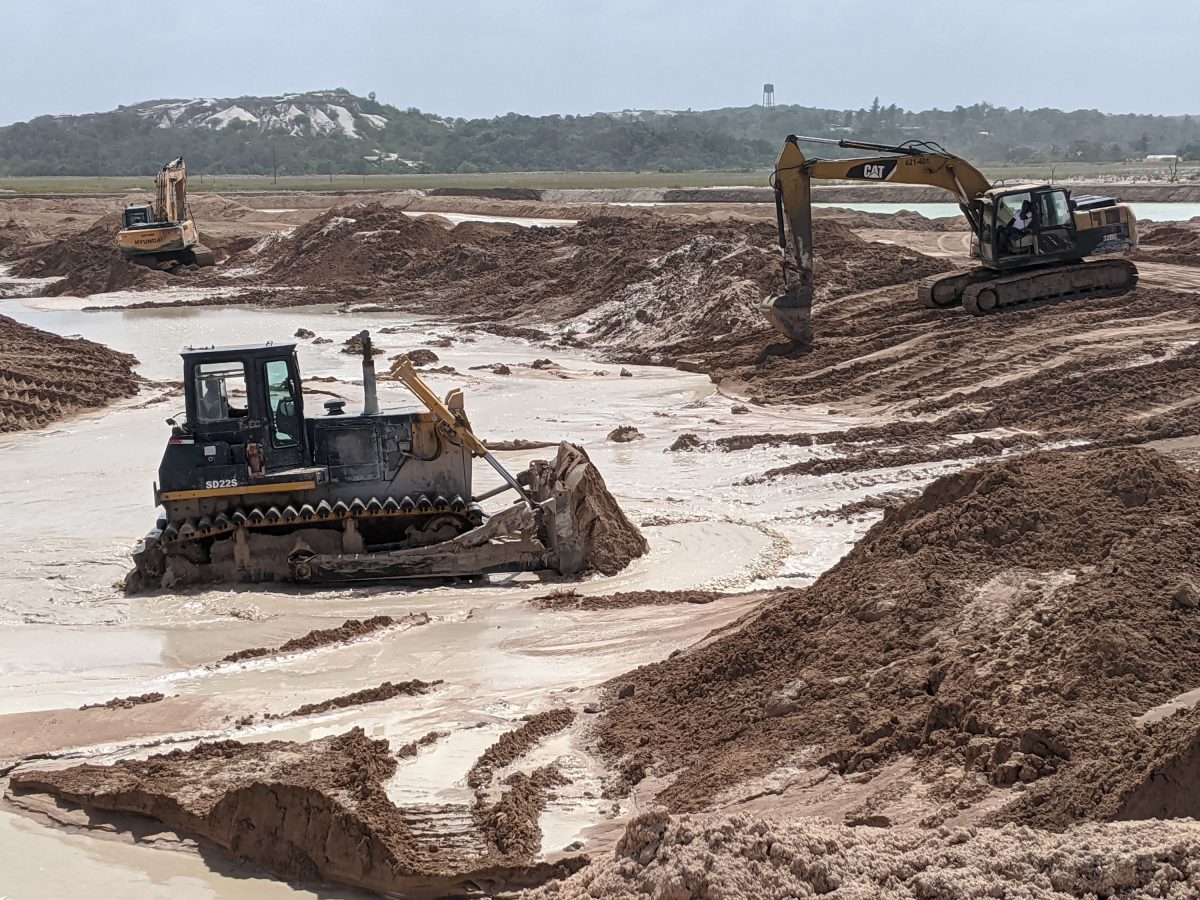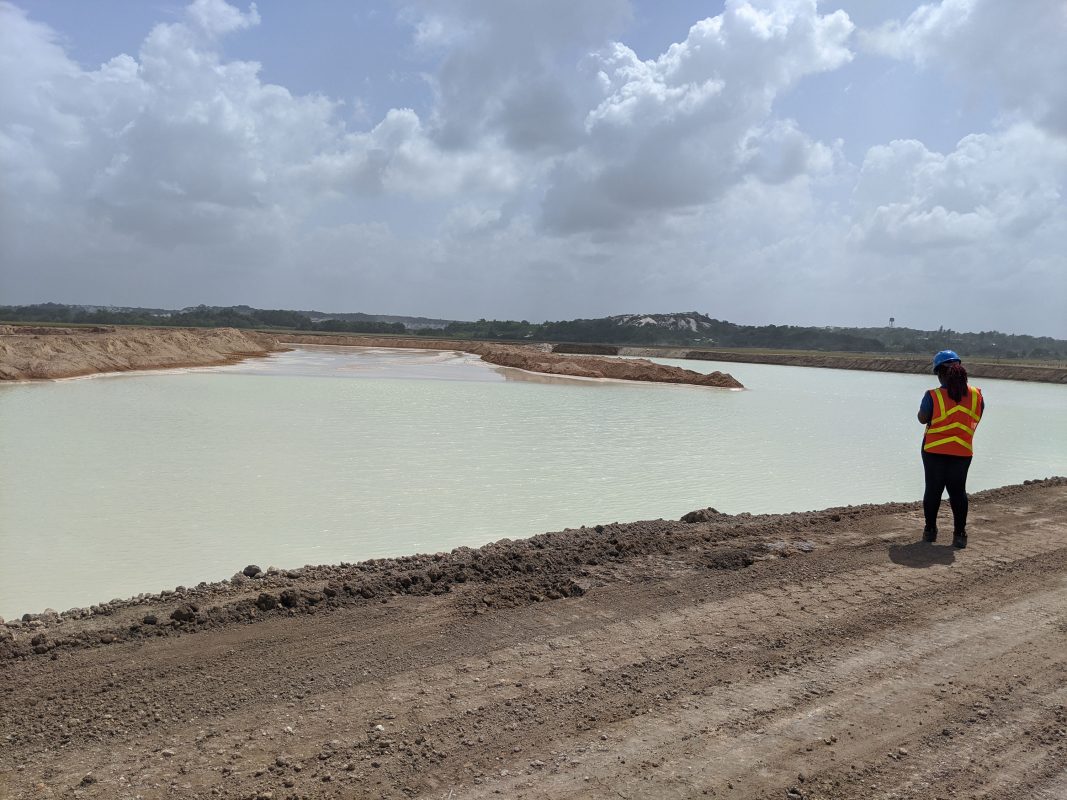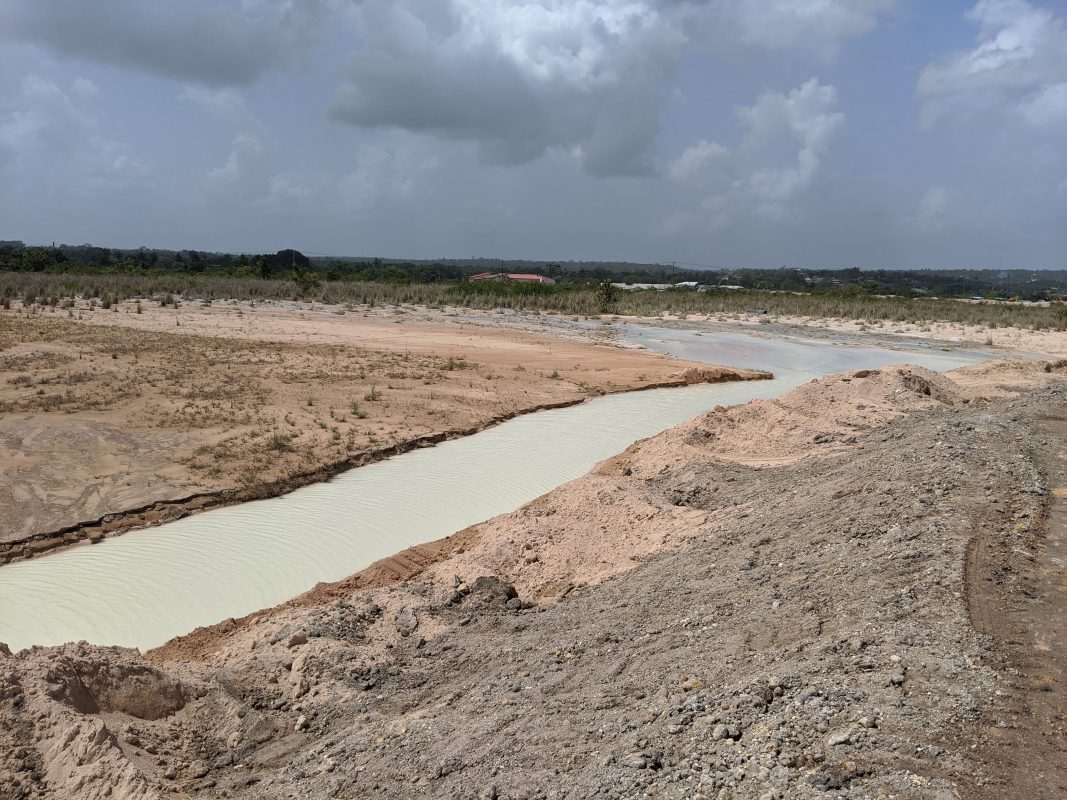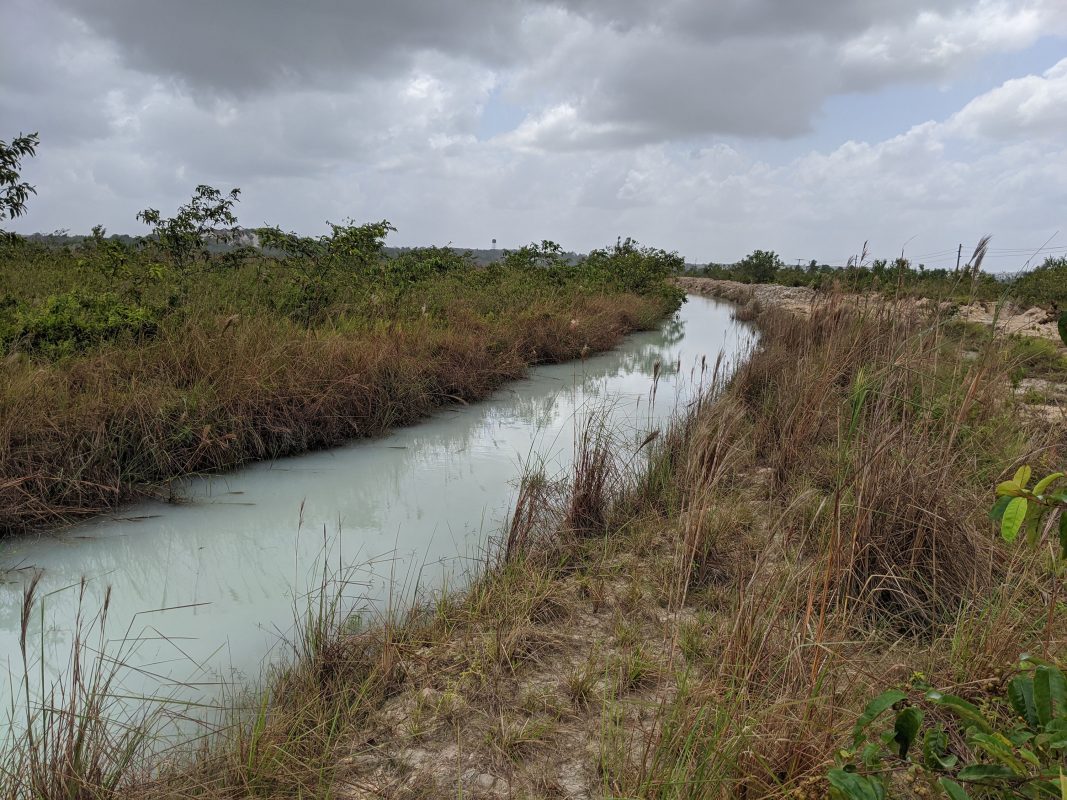The Environmental Protection Agency (EPA) is generally pleased with the US$10,000 improvements which the Linden-based Bosai Minerals Group (Guyana) has effected to its once problematic tailings pond, says EPA Senior Environmental Officer, Collis Primo, although he said recommendations will be made on how the facility can be further improved.
Primo led a team to inspect the facility yesterday with a view to determine whether the bauxite mining company will be granted permission to recommence washing bauxite, and to discharge the resulting slurry into the tailings pond. Primo said that this decision could be made by tomorrow, earliest, or 5th February latest.
On 10th January 2020, the EPA ordered the Chinese company to halt the discharge of water into the tailings pond after a breach of the pond led to the flooding of the yards of six residents of the Linden community of Noitgedacht. Since this time, the company has been working to improve the pond. Meanwhile, its operations remain at a virtual standstill.
“Based on what was observed from a previous visit [earlier this month], it is a 1000 percent improvement from what was seen. From that perspective, we are satisfied to a large extent with the work they have put in”, Primo said.
Bosai, a Chinese company, was fined $1 million for the aforementioned breach, which EPA Executive Director, Vincent Adams, had said was related to another environmental incident at the same operation in November, for which the bauxite company was also fined $1 million. Bosai officials shared yesterday that the first fine has been paid, and payment of the second fine is being processed.
Stage 1
The newly improved tailings pond spans four kilometers, is managed in three stages, and cost the company US$10,000 to complete.
Stage 1 is the point at which slurry enters the tailings pond. A Bosai official explained that around 4000 tonnes of slurry (a combination of water and bauxite sediments), can enter through the discharge channel every day.
It was explained that larger particles in the slurry are pushed out of the discharge channel by a bulldozer on a daily basis. These particles are eventually sold as cement grade bauxite.
It was further explained that 90 percent of the sediments contained in the slurry settle in Stage 1, before the slurry proceeds to Stage 2, which is essentially a cell constructed to allow for more effective settlement of the sediments. Primo noted that the mechanism seemed effective and is likely to remain that way if the dozer continues to function on a daily basis.
Stage 2
Stage 2 is a cell which allows for prolonged settlement of whatever sediments are not pushed out of the discharge channel.
Lighter sediment and water flow into the cell, and collects until it reaches the discharge outlet connected to the cell. The dyke constructed around the cell is 6 kilometers wide, 2 meters high, and is made of clay. It was previously made from the less suitable cement grade bauxite, which was partially responsible for the flooding of several residents in Noitgedacht.
Adams had told Stabroek News that a pipe had failed, which led to the erosion of the cement grade bauxite dyke. Stabroek News has since learned that in an attempt to remedy an existing issue, a barrel or ‘drum’ was used as a sleeve to keep two large pipes together. Stabroek News was informed that it was inevitable that water would seep from this set up, as it did. This approach has since been abandoned.
Bosai’s chief mining engineer, Orin Barnwell, explained yesterday that though the dyke surrounding the cell is 2 meters high, the discharge outlet is 0.6 meters from the bottom of the cell, so that in the absence of rainfall, there is never more than 0.6 meters of discharge in the 2-meter cell. He explained that the excess 1.6 meters was factored in to mitigate overtopping in the event of rainfall.
The EPA’s geological engineer, while generally pleased with the structure, said that continuous rolling and compacting will be required to maintain the integrity of the dyke. Notwithstanding this recommendation, he said that this was the best material that could be found for the job, and that the company has made good use of it.
The engineer also noted and commended the construction of a dam in the middle of the pond which serves to increase the travel distance of the slurry. The dam is made of cement grade bauxite, which is appropriate as the structure is not intended to keep the discharge from getting into the environment. The geological engineer explained to Stabroek News that the “meandering” design of the dam increases the efficiency of the tailings pond since “every bend, and curve in the stream allows for settlement of the sediments on the banks of the curves.
The engineer also said that Bosai could have
considered the use of an environmentally friendly agent which helps with settlement. He explained that a suitable agent would have mitigated the need for longer settlement time, while still decreasing turbidity.
Stage 3
Stage 3 is comprised of a 3-kilometer-long discharge channel. Before the discharge flows into the channel from the cell, it flows through a large patch of naturally occurring vegetation which further filters the discharge before it flows into the environment.
This channel was recently dredged to increase its retention capacity so that rainfall is less likely to lead to overtopping. Another member of the EPA’s team noted that the water at this stage of the pond was still quite murky, and wondered whether this was the result of the sediments beneath the vegetation it passes through to get to that point.
The EPA has also requested that Bosai test the discharge for heavy metals and chemicals. Previously, tests were only done to determine turbidity levels. Wainewright Bechune, head of
Bosai’s Environment Department, explained that Bosai does not have the facilities to do this itself, but is making arrangements for this to be done by another firm.







